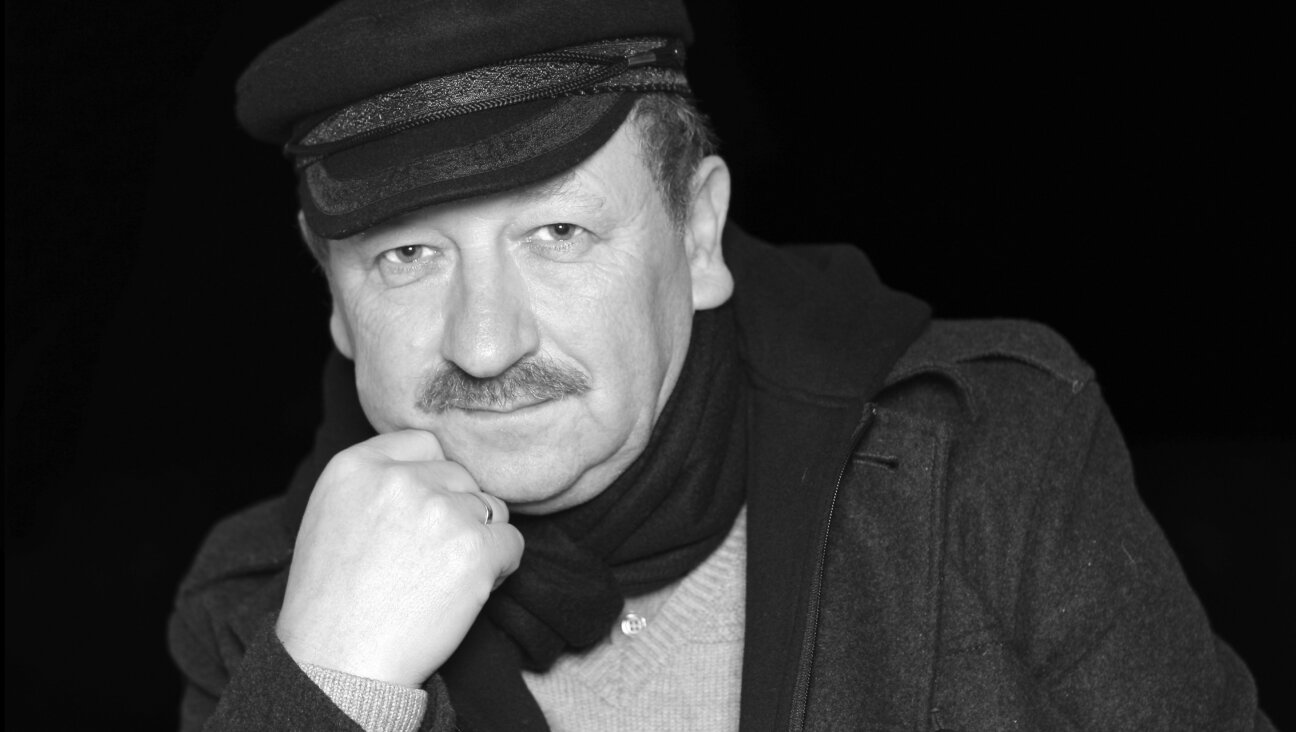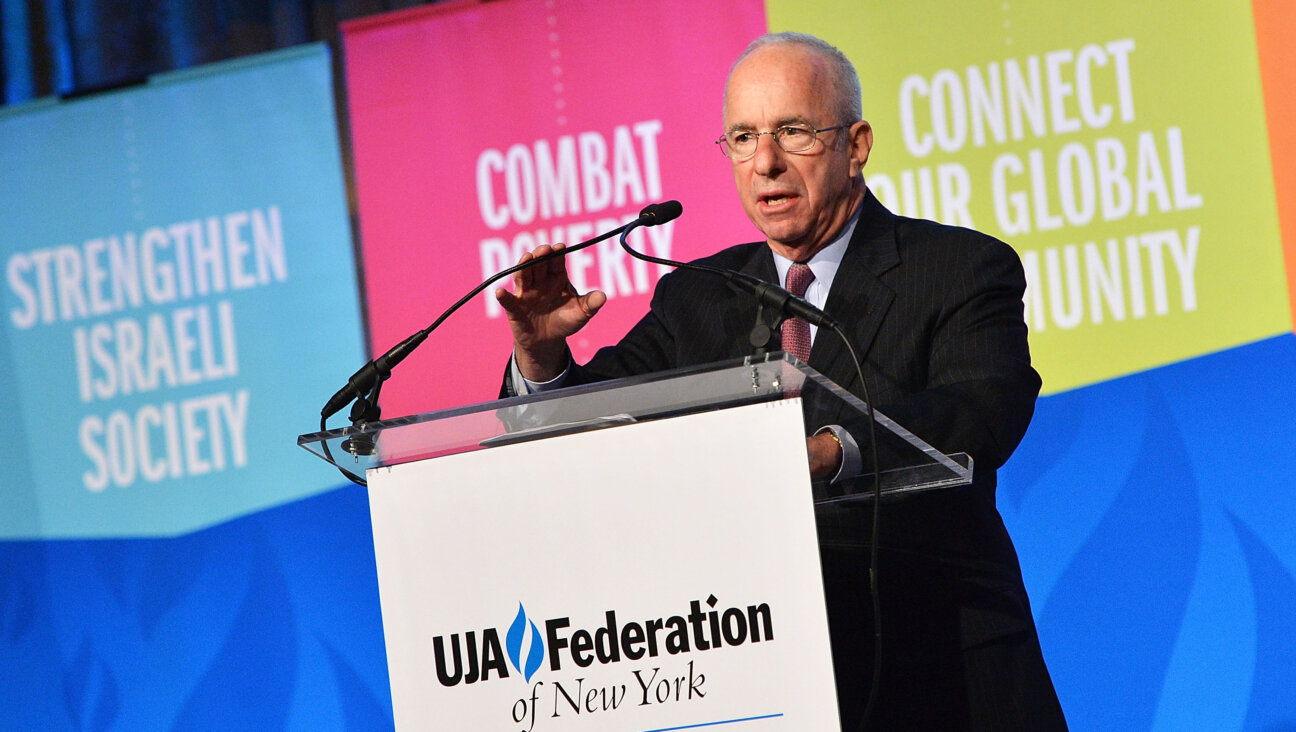Lithuania Archeologists Unearth Buried Parts of Demolished Vilna Great Synagogue

Image by Wikimedia Commons
VILNIUS, Lithuania — An international team of archeologists unearthed part of the complex that housed the former Great Synagogue of Vilnius, which Soviet authorities destroyed after World War II.
An underground floor of a building belonging to the complex that housed the 17th century synagogue was exposed for the first time since 1957 earlier this month by experts from the United Kingdom, Canada, Israel and Lithuania, the director of a Jewish museum involved in the excavation told JTA Wednesday.
“We don’t know yet what exactly was uncovered because analysis will be done on it in the following months,” Markas Zingeris, the director of the Vilna Gaon State Museum, said.
The Jewish complex internationally significant because it used to be the center of one of Eastern Europe’s largest and most prominent Jewish communities and was the place of work and worship of the 18th-century rabbinical luminary Elijah ben Solomon Zalman, also known as the Vilna Gaon.
The complex and synagogue were razed in the 1950s after sustaining damage during World War II, and buried under earth atop of which a school was built.
The Great Synagogue of Vilnius was one of the largest Jewish community buildings that existed in Vilnius – an Eastern European city that had so many Jews it was known as “Lithuanian Jerusalem.”
“But the Vilna Gaon actually didn’t pray in the Great Synagogue, but rather in one of the smaller synagogues around the main one,” Zingeris said.
When Germany invaded the country in 1941, Vilnius had 100,000 Jews, who accounted for nearly half of the city’s population. German soldiers and local collaborators killed 95 percent of the entire Jewish population of what is today Lithuania. The area had 141,000 Jews.
Previously, a team of archaeologists used the same technique to survey another significant site in the history of the Lithuanian Jews — the site of the Ponary Massacre. They were able to map a tunnel which prisoners used to escape.
The team of archaeologists at the synagogue, led by Richard Freund, a professor from the University of Hartford, used a geophysical surveying technique that enabled them to identify objects under the street without ruining infrastructure, the Baltic News Service reported.
At the digging site, researchers positioned large, fine screens, which the team uses to sift through rubble excavated. The structures unearthed so far appear to be staircases leading to underground floors.
Amit Belaitė, a board member from Vilnius of the European Union of Jewish Students, attended the school bordering on the plot of land where the excavation is taking place.
“My parents told me that my school was on top of the synagogue but no one knew where,” said Belaite, 23. “It’s extremely moving to finally see it.”
The Forward is free to read, but it isn’t free to produce

I hope you appreciated this article. Before you go, I’d like to ask you to please support the Forward.
Now more than ever, American Jews need independent news they can trust, with reporting driven by truth, not ideology. We serve you, not any ideological agenda.
At a time when other newsrooms are closing or cutting back, the Forward has removed its paywall and invested additional resources to report on the ground from Israel and around the U.S. on the impact of the war, rising antisemitism and polarized discourse.
This is a great time to support independent Jewish journalism you rely on. Make a gift today!
— Rachel Fishman Feddersen, Publisher and CEO
Support our mission to tell the Jewish story fully and fairly.
Most Popular
- 1

Culture Cardinals are Catholic, not Jewish — so why do they all wear yarmulkes?
- 2

Fast Forward Ye debuts ‘Heil Hitler’ music video that includes a sample of a Hitler speech
- 3

News School Israel trip turns ‘terrifying’ for LA students attacked by Israeli teens
- 4

Fast Forward Student suspended for ‘F— the Jews’ video defends himself on antisemitic podcast
In Case You Missed It
-

Yiddish קאָנצערט לכּבֿוד דעם ייִדישן שרײַבער און רעדאַקטאָר באָריס סאַנדלערConcert honoring Yiddish writer and editor Boris Sandler
דער בעל־שׂימחה האָט יאָרן לאַנג געדינט ווי דער רעדאַקטאָר פֿונעם ייִדישן פֿאָרווערטס.
-

Fast Forward Trump’s new pick for surgeon general blames the Nazis for pesticides on our food
-

Fast Forward Jewish feud over Trump escalates with open letter in The New York Times
-

Fast Forward First American pope, Leo XIV, studied under a leader in Jewish-Catholic relations
-
Shop the Forward Store
100% of profits support our journalism
Republish This Story
Please read before republishing
We’re happy to make this story available to republish for free, unless it originated with JTA, Haaretz or another publication (as indicated on the article) and as long as you follow our guidelines.
You must comply with the following:
- Credit the Forward
- Retain our pixel
- Preserve our canonical link in Google search
- Add a noindex tag in Google search
See our full guidelines for more information, and this guide for detail about canonical URLs.
To republish, copy the HTML by clicking on the yellow button to the right; it includes our tracking pixel, all paragraph styles and hyperlinks, the author byline and credit to the Forward. It does not include images; to avoid copyright violations, you must add them manually, following our guidelines. Please email us at [email protected], subject line “republish,” with any questions or to let us know what stories you’re picking up.











